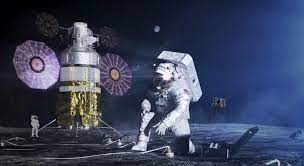Space Exploration: Materials and Technologies Pushing the Boundaries

About Course
Step into the extraordinary world of space exploration and uncover the cutting-edge materials and technologies that are redefining humanity’s presence beyond Earth. This course offers a captivating journey through the advanced science and engineering behind modern space missions—from the materials that endure extreme temperatures and radiation to the propulsion systems that carry spacecraft across the solar system. Whether you’re fascinated by the Mars rovers, intrigued by deep space telescopes, or curious about building sustainable habitats on the Moon and Mars, this course brings the marvels of space engineering to life.
Designed for curious minds and aspiring engineers alike, this course blends real-world case studies with visionary technologies shaping our future in space. You’ll explore everything from lightweight alloys used in spacecraft, ceramic tiles used during atmospheric re-entry, to nuclear propulsion and solar sails for interplanetary travel. By the end, you’ll not only understand the technologies enabling space exploration today but also get inspired by the possibilities that lie ahead.
Course Content
Introduction
Importance of space exploration
00:00Role of materials and technologies in space exploration
00:00Overview of the eBook’s content
00:00